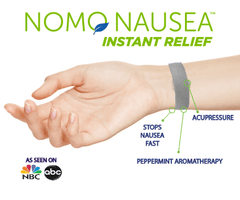
C Section: What you need to know about a Cesarean section
In this blogpost you will learn the science behind the truth about cesarean sections from why you might need one (a doctors’ reason for being quick with the knife), ways to avoid a c section with helpful recovery tips, and what a spinal anesthesia is and how does it give pain relief for the procedure.

Cesarean Birth
What is cesarean section?
A C section, named cesarean or also seen spelled caesarean and caesariansection, was named after Julius Caesar as he was alleged to be born that way and his mother lived for many years after this type of birth. Many suggest he was not born this way as there was only 1 documented case where a woman performed her own c section and her and baby survived, so the likelihood is very rare. C sections were carried out in ancient times but usually in Rome only after the mother was dead during child birth to get the baby out. Caesar’s name and the latin root word of his name caedo means to cut.
Low Transverse Cesarean Section
A C section means to remove the baby via the lower pelvis abdominal area instead of the natural vaginal delivery. The most common indications labor dystocia (non progressing labor), abnormal or nonreassuring fetal heart rate tracing, fetal malpresentation (anything but head down), multiple gestations (more than one baby), and suspected fetal macrosomia (big baby usually due to pregnancy gestational diabetes).
I am not trying to scare anyone but a c section is a major surgery. The overall global severe morbidity and mortality is 9.2%/0.9% versus vaginal delivery 8.6%/2.7%. I personally have had one of each, a vaginal with my son and a c section with my daughter, and I would take a vaginal delivery any day of the week. The recovery for me was much quicker and if I ever had a 3rd child I would opt for a VBAC (Vaginal Birth After C Section). If you want to learn more about what is a VBAC check out Pregnancy Pukeology Podcast Episode 21.
Spinal Block for C Section
The invention of modern anesthesia has allowed us to perform c sections while keeping the mother alive and well. Starting with Ether as William T. G. Morton at Mass General used it to remove a facial tumor, the application became standard for childbirth of the wealthy and for c sections during the mid 1800s after Queen Victoria made it popular having both of her children this way. In today’s day in age, we use one of three ways to properly administer anesthesia for childbirth. The most dangerous and considered last resort is a full general anesthetic, where the pregnant woman goes completely off to sleep using a combination of IV drugs and anesthesia gases because of a true emergency c section.
Epidural for Birth
The second is very common using the epidural that was placed for a vaginal delivery in case complications arise by giving high doses of local anesthetic and pain medication directly into the epidural space in the back. Some of this abundance of medication seeps thru into the cerebral spinal fluid CSF and creates the numbing affect. This is not a complete block and usually used for non-emergent/ urgent c sections after the anesthesia provider checks the level of blockade. The most common is a spinal anesthetic for most scheduled sections. The anesthesia provider, after looking over your entire health history, will position you like a mad cat or boiled shrimp with your back rounded facing them. After the back has been disinfected, a small needle with local anesthetic numbs the area and a small long needle (a little bigger than the local needle) is inserted until CSF fluid is obtained where a small dose of high concentration local anesthetic is administered and will completely numb from above the belly button to the feet. You will feel pressure and touch, but no pain, that is what the local anesthetic directly targets for a certain period of time. Complete feeling to your legs will return about 2 hours after in recovery.
Once the spinal or epidural is dosed and placed, then the magic happens. The skin is cleaned. If it is a true emergency we call it a splash and go. A bucket of betadine is thrown on the skin and the doctors time is on the clock to get the baby out immediately. If you are having a scheduled C section it is much calmer. The doctor can take their time cutting thru each layer: skin, muscle, and the uterus. You will hear the suction noise a lot and feel pressure on your chest when it’s go time. The amniotic fluid is being suctioned after the uterus is cut and the baby is being delivered.

Elective C-Section or Not
Why do some women get C sections and others don’t?
Once your water breaks, or your water is broken (if you’re going to get an epidural get one before they break it because it hurts) then the baby must be removed within 24 hours to avoid infection. Your temperature and babies heart rate (they have naturally high heart rates but it will be even higher if there is an infection looming) will constantly be measured to see if infection is creeping in.
Let’s be real most sections start happening at the “witching hour”. Most hospitals are on a 12 hour schedule meaning at 5pm they start cutting women. Be firm with your OBGYN’s and let them know unless there are problems with the baby or for fear of my health and safety, I do not want a c-section.
Early decelerations meaning before the start of the contraction means the head is compressed.
Late decelerations signals impaired blood flow and oxygen to the placenta for oxygen exchange. Many times the mother will be repositioned and oxygen will be placed.
Variable decelerations indicates cord compression and is the scariest because imagine the lack of oxygen the baby will be receiving if the cord is compressed thru the entire vaginal delivery.
All 3 can possess a threat to the babies safety and if severe enough or where the heart rate does not bounce back will signal a need for an emergency c section.
A version is common for women who want to attempt to turn the baby at 37 weeks in the operating room to move the babies head into the correct position in order to avoid a scheduled section. I was doing handstands in the pool trying to get my baby girl to flip but she didn’t so you know how this story ends, under the knife. The reason a version is done in the operating room is just in case something goes wrong, they can immediately call for a section to get the baby out fast. You can not have a version
if you have an anterior placenta (which can be seen on ultrasound).
Some OBGYN’s will insist a woman with multiples gets a c section because it is the most controlled delivery, whereas others are comfortable attempting vaginal deliveries. Check out Episode 17 What to expect from your first checkup for more questions to ask if their OBGYN group is the right one for you.
These are the most common pregnancy physiological reasons but the mother’s health is also to be taken into account. Maternal high blood pressure that can present into pre eclampsia and eclampsia, diabetes, cardiovascular instability, renal insufficiency, ect.
Remember your NoMo Nausea Band should be in your hospital bag because 80% of women will get sick during delivery, and NoMo Nausea Med Plus is used in over 90 hospitals but it’s better to be safe than sorry if your hospital doesn’t carry it.
Some other helpful hints include: after your C section take the full 6 weeks off and let your muscles heal. Use a belly band to keep pressure on the wound, make sure your change your dressings frequently, have a squirt bottle with warm water everytime you go pee or poop (yes you will bleed out of your vagina even with a c section so have big pads ready), make sure you take a stool softener, and try to avoid narcotics (ask for an Ibuprophen on steroids called Toradol which has the same pain traits as 7.5mg of Morphine without the terrible side effects like nausea, vomiting, itching, or constipation because narcotics like Dilaudid, hydrocodone, or oxycodone can back you up and you already had your abdominal muscles cut so help yourself out.

